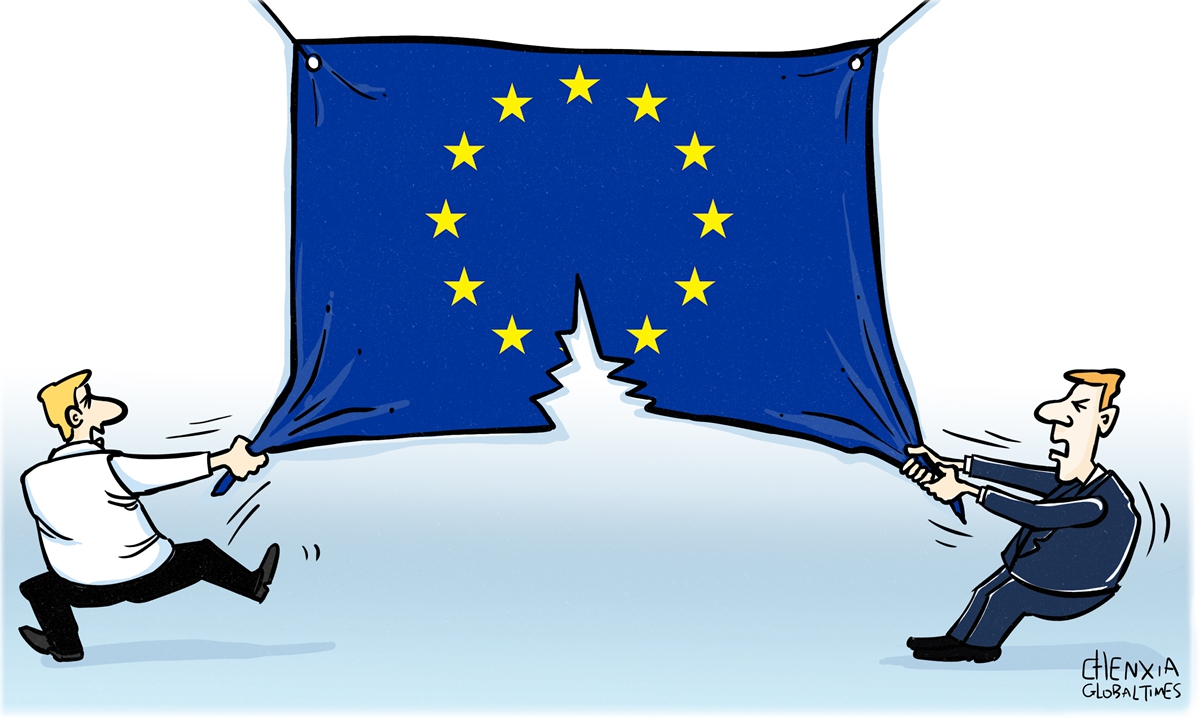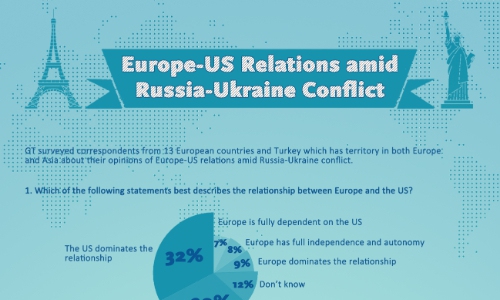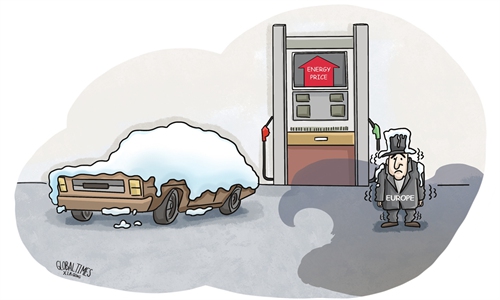
Illustration: Chen Xia/Global Times
Nearly one year on, the Russia-Ukraine conflict is still raging with its spillover effects. The contradictions between Old Europe and New Europe, namely Eastern Europe and Western Europe, are catching eyeballs, raising concerns over a divided continent. Meanwhile, divergences between North and South Europe are also surfacing, which may cause greater disruption to European unity and future development.Both Northern and Southern Europe belong to Old Europe. Unlike Central and Eastern European countries which attach more importance to their practical interests and national sovereignty, North and South Europe tend to support European integration. However, their accumulated contradictions have become increasingly hard to reconcile over the past decade.
The EU has gone through one crisis after another, including the sovereign debt crisis, refugee crisis and the COVID-19 pandemic, and the Russia-Ukraine conflict is still going on. Every time, Southern Europe is hit harder. The gap of economic development with North Europe is also getting wider.
Take the COVID-19 pandemic. Southern European countries generally rely more on the tourism industry, while the impact on manufacturing in Northern European countries is relatively controllable. Moreover, Southern European countries have high debt levels. The assistance for enterprises during the pandemic further increased the debt and fiscal deficit. In addition, subsidies for companies in Southern European countries are not as large as those in Northern European countries. As a result, enterprises in the South are now in a more unfavourable position in terms of economic competition.
Soaring energy prices brought about by the Ukraine crisis have hit Southern European countries hard again, especially Italy. Southern European countries cannot afford to spend more money to subsidize companies, while the wealthy northern countries can splash the cash. Long-term economic divisions and contradictions have accelerated the social and political polarization of European countries. Both southern and northern countries are facing rising anti-euro, anti-EU, and anti-integration populist pressures within their own countries to varying degrees, which are limiting cooperation between governments at the EU level.
In general, the conflicts between the North and the South within the EU are concentrated in three aspects. First, whether the EU is to be more united or more efficient in terms of fiscal policy. Southern European countries hope that the Eurozone will jointly issue bonds because of their large debts and high debt interest rates. Germany and other countries are concerned about the so-called moral hazards, or the risk that Southern European countries will lose momentum on structural reforms if there is no market pressure. During the epidemic, the EU launched a recovery fund, but the scale was limited.
Second is whether the EU's monetary policy should be looser or tighter. Over the last decade or so, the European Central Bank (ECB) has primarily responded to the risk of deflation by implementing a quantitative easing policy and purchasing a large amount of member states' national bonds, which is essentially fiscal monetization. This policy is very friendly to Southern European countries since it has depressed their usually higher yields on government bonds to help them stay away from the debt crisis. However, partly due to the after-effect of this policy, in 2022, inflation in the West, including the EU, was high, and the ECB changed its policy and continued to raise interest rates. This has led to the growing gap of interest rates between the south and the north.
Third, conflict lies in whether the diplomatic resources of the EU should be tilted more to the south or the east. Southern Europe has traditionally been closely linked to the Middle East and Africa. It hopes the EU will invest more of its resources to reduce the inflow of refugees and illegal migrants fundamentally. On the other hand, the countries in the northern part of Europe pay more attention to Eastern Europe, the North Caucasus, and Central Asia.
After the outbreak of the Ukraine crisis, most of the EU's diplomatic resources have been devoted to Ukraine, and the bloc's assistance and attention to Africa and the Middle East have decreased significantly. Although countries in Southern Europe have shown solidarity on the Ukraine issue for reasons such as political correctness, they actually do not take the so-called Russian threat seriously.
It is history and reality that the economy in Southern Europe is weak while the economy in the north is strong. And such a pattern will be difficult to reverse; instead, it may even intensify in the short term. As the gap between the north and the south continues to grow, the balance between the two parts of Europe is lost, and the EU is caught in a dilemma.
Under electoral politics, the EU has not been able to find an effective solution to alleviate the situation instead of choosing to procrastinate. However, it is likely that the accumulated tension of these conflicts will be released in some intense form, which increases the uncertainty of the future development of the EU. And such uncertainty will, in turn, hinder the development potential of Europe. As a result, a vicious circle will be formed.
The author is director of the Institute of Europe at China Institutes of Contemporary International Relations. opinion@globaltimes.com.cn



